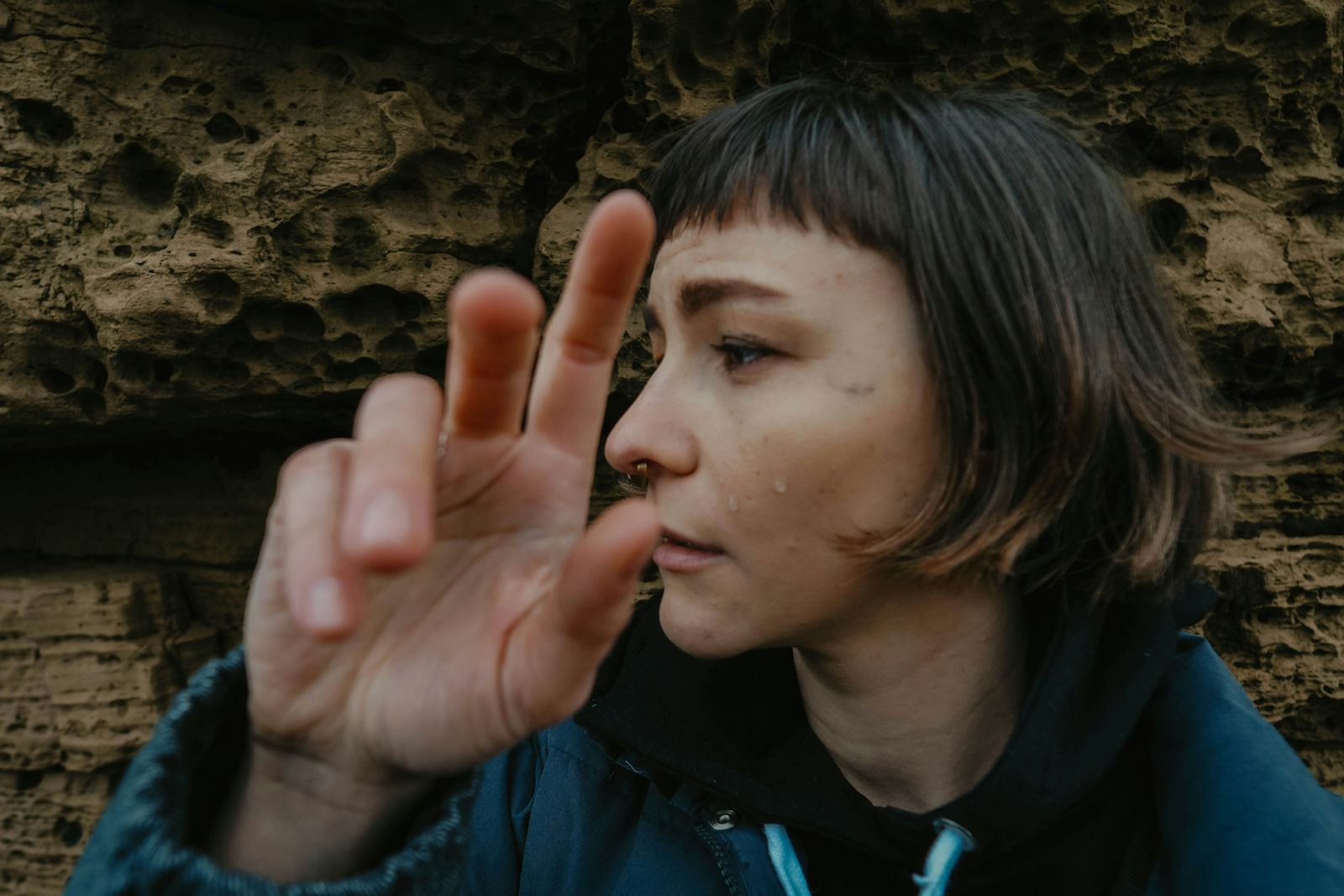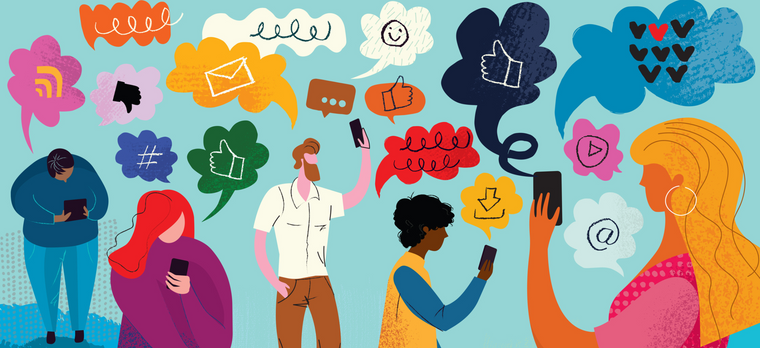From Highlight Reels to Lowlight Feels: The Monetization of Meltdowns
Welcome to the authenticity paradox, a weird melancholy space where teary TikToks and “depression room” tours are the new social currency.

Anyone who knows me, knows I love a tricky paradox. Where there is tension there is energy, right? Right now, we’re in the middle of a cultural contradiction: The more we strive to be “real” online, the more performative it becomes. Welcome to the authenticity paradox, a weird melancholy space where teary TikToks and “depression room” tours are the new social currency. What began as a rebellion against the hyper-curated Instagram aesthetic has evolved into something murkier, where our most vulnerable moments are filtered through the lens of engagement metrics.
The trigger? A collective fatigue with perfection has long been on its way. Social media’s glossy highlight reels left users craving something raw, something real, something less curated. But as platforms and creators caught on, authenticity is blurred. Nowhere is this more visible than in the rise of crying content - a genre that spans spontaneous breakdowns, breakup vlogs, and even crying makeup tutorials. A quick search TikTok search reveals that Crying has 529.4 million posts, Uncontrollable Crying has 136.4 million posts and Break Ups has 303.5 million posts. Are we all becoming dacryophiles? Surely other mechanisms are at work here. Now, with AI taking over our feeds, I find myself wondering; how will authenticity shift and what are the implications for marketers?
Platforms of Pain and Performance
TikTok is ground zero. It’s where users cry on camera, confess their mental health struggles, and share their lowest lows in real time. Instagram has followed suit, with lo-fi Stories and emotional captions. Even LinkedIn has dipped a toe in, with posts about burnout and failure dressed up in corporate vulnerability. Geographically, this trend is global but most pronounced in Western digital cultures, especially among Gen Z and younger Millennials in the U.S., U.K., and Europe. But it’s spreading fast, with creators in Latin America and Asia localizing the trend with their own emotional vernacular.
The Faces Behind the Feels
The faces of this shift are young digital natives. The list of celebs who have cried recently on social media is long. Take for example Emma Chamberlain, Justin Bieber, Lizzo and Drew Barrymore. But it’s not just celebs and influencers. Everyday users are sharing crying selfies and emotional breakdowns, often in search of connection, not clout. As one creator put it, “I wanted to be witnessed in pain.” And yes, brands are watching. Some are even participating, leaning into lo-fi, emotionally resonant storytelling to build trust with audiences who are increasingly sceptical of polish.
The Business of Being Real has a name: Sadfishing
In a world full of fake, authenticity is the new luxury—and it’s monetizable. As digital media scholar Ysabel Gerrard notes, “Now you’ve got crying and tears as a way of generating engagement, views, likes, clicks and helping to build your brand.” The emotional rawness that once felt taboo is now a viable growth strategy. But it’s a tightrope. The line between vulnerability and performance is razor thin. Cry too often, and you’re accused of attention-seeking. Cry too perfectly, and its crocodile tears. The audience is watching—but also judging.
The cringy internet trend that millions are guilty of has a name: Sadfishing. It’s a term that captures the blurry line between seeking support and seeking attention—and it’s become a defining feature of the emotional internet. The science backs it up: mirror neurons help us empathize with others’ emotions, which is why watching someone cry can feel so compelling. But it also raises questions: Are we becoming more emotional—or just more performative? Is this catharsis or content? Or taking it a step further, is it an aesthetic. Case in point the teary eyes filter and the fact that a crying selfie of celebrity model Bella Hadid launched a Crying Girl Makeup tutorial frenzy a couple of years ago, when she shared several crying selfies to remind her followers that what we see on socials is not real. How perfectly ironic. The fact that a that a candid carousel of crying selfies can lunch a new makeup aesthetic truly captures the authenticity dilemma and the spirit of our times.
Where It’s All Headed
As AI-generated content floods our feeds, the hunger for human imperfection will only intensify. But so will our scepticism. Those who like to spend time on Reddit, the less filtered corner of the internet, will find little or no bandwidth for clout meltdowns. I lose sympathy for them instantly. I know it’s not fair, and a lot of times they are genuinely heartbroken.... but I just can't respect it.. Something about the fact that they felt themselves become upset and then thought "I should film this", then took the time to set up a tripod, create good lighting, open a camera and hit record. Others chime in, describing how it gets even more strange when videos are set up to give us the feeling that we were watching a raw and candid moment. When the scenes are carefully set up to make good content.
Meanwhile my teenagers at home remind me that for them online culture is culture. They simply don’t experience the barrier to record , review, caption, adding hashtags and hitting "post” in the same that those born before social media do. For those with digital DNA, sharing feelings online is an extension of their behaviour rather than an interruption. Crying online is about connection, validation, attention and yes engagement and clicks too. As my oldest son said, sometimes it’s not that deep, mom (eyes rolling).
Real vs reel
Just when we thought we had a grip on authenticity, it slips through our fingers again,- reshaped by culture, technology, and the ever-shifting norms of digital life. So how do we keep it real (or should I say, keep it reel)?
The truth is, authenticity isn’t a fixed destination but a moving target, a reflection of our evolving human behaviour. It’s something we admire, something we aspire to, and something we instinctively recognize when it’s real. For marketers, getting authenticity right doesn’t start with a storyboard or a filter. It starts with a human truth. A story worth telling. A moment worth sharing - not because it will make great content but because it’s honest.
Ultimately, this trend challenges us to ask: Can anything be truly authentic when it’s posted for public consumption? Maybe not. But in a world where everyone’s performing, the most radical act might be admitting that we are.
Pernille Kok-Jensen
Trends & Cultural Insights Director at MAREPernille Kok-Jensen – Trends & Cultural Insights Director, MARE
Pernille Kok-Jensen is a seasoned expert with 20 years of experience turning trends and cultural insights into powerful, actionable strategies. With a sharp eye for emerging signals and a deep understanding of cultural shifts, she helps organizations across industries anticipate change and stay ahead of the curve.
Blending her background as a trend researcher and creative strategist, Pernille crafts future-proof strategies that resonate. She has guided leading start-ups, scale-ups and leading brands such as MTV, Spotify, Stoov, Nike, Glenfiddich, ANWB, Campina, and VGZ in navigating cultural shifts and embedding innovation.
A published author and award-winning keynote speaker, Pernille is known for her bold thinking and passionate storytelling. Born in Denmark in 1976 and raised across Africa and Asia, she holds a Bachelor’s degree in International Culture & Communication and a Master of Arts. Fun fact: her early career as a nightlife performer in her twenties adds a unique creative edge to her strategic work today.


